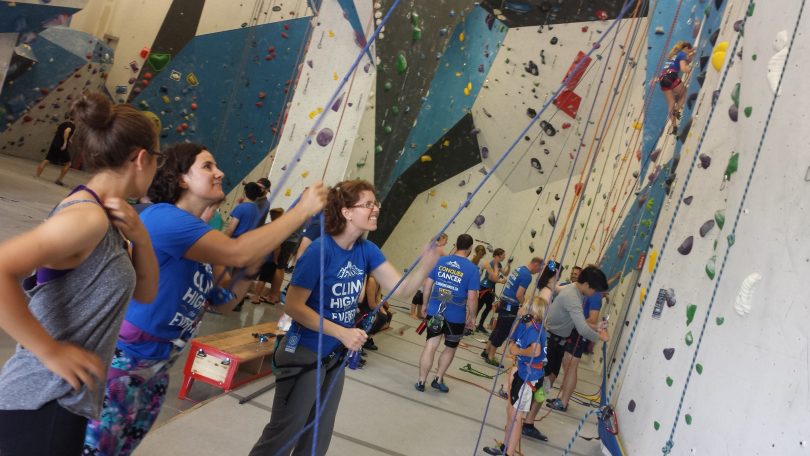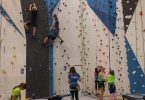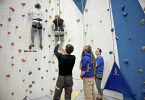While bouldering and autobelays have made climbing something that you can drop in to do on your own, climbing has traditionally been a sport done with a partner. One person climbs while the other operates the ‘belay’ – a rope system that arrests any falls. The relationship with your climbing partner is the foundation of climbing’s supportive environment. You rely on your partner totally for your safety, as well as guidance and encouragement.
‘Belay’ is a term taken from sailing. Traditionally, it meant to secure or lock off a rope so that it wouldn’t move. In climbing, belay is the name of the rope that connects the climber’s harness to the belay operator (belayer), and belaying is keeping that adjusted for the best and safest catch.
For many, the idea of ropes and knots are intimidating. Too many of us have bad memories of fumbling our way through learning knots – something about bunnies and trees and back down the hole, and never being sure if it was right. Climbing avoids that stress, using knots that are simple and easy to verify. Our belay device and belay bars mean that strength and weight are not a factor in being able to hold up another climber. Rather, proper technique is.
Learning to belay opens up the kind of climbing you can do. It lets you rest on a difficult part of a route and work it several times until you figure it out. It lets you try harder grades or overhung climbs where autobelays aren’t possible. It is especially popular with parents who want to help their kids climb more and climb harder – and the best part for parents is that belayers never leave the ground!
To take the belay lesson, email katie@junctionclimbing.com with the time and date that you’d like to take the lesson. We can accommodate most lesson requests with a few days notice. Even better — the belay lesson ($55, including tax) includes a two-week membership for you to come back in and use your new skills. Over the last two years, thousands of Londoners have learned this skill – why not you?
Submitted by Junction Climbing Centre







